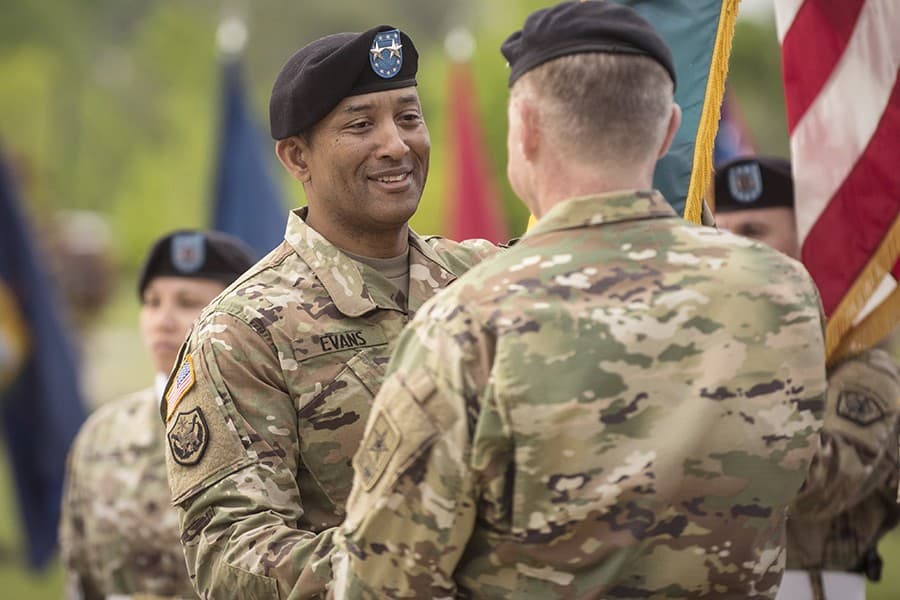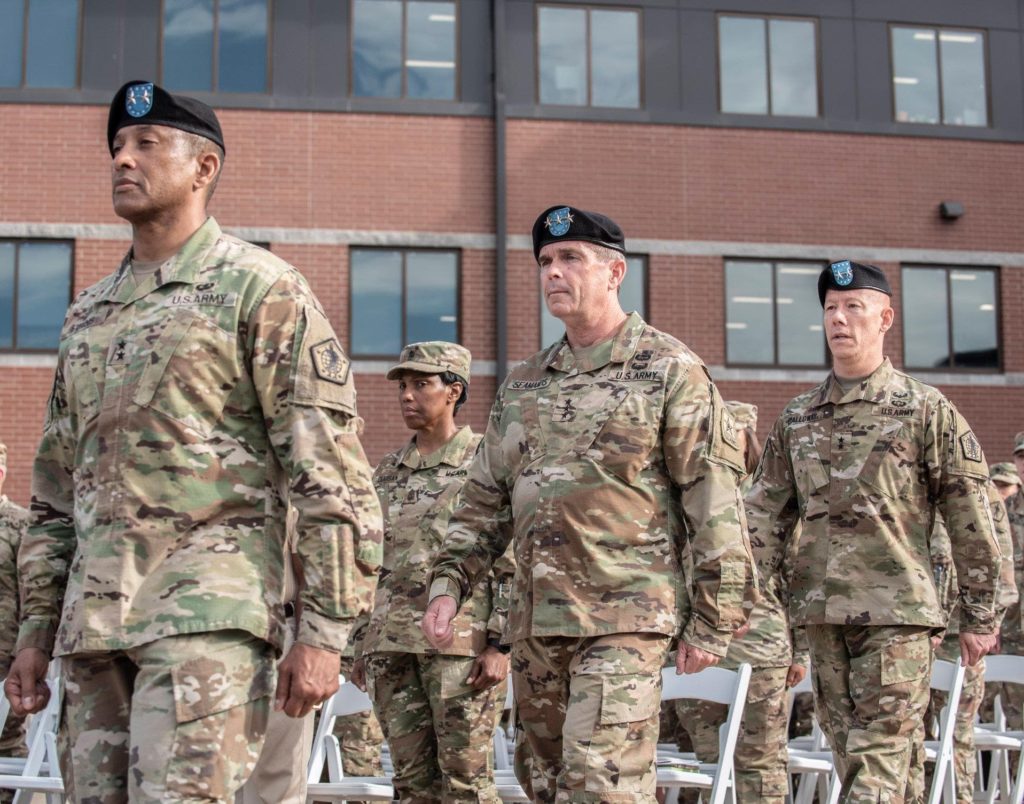
Whether an Army NCO or a civilian, it is important to know what to do when faced with an HRC evaluation. When this happens, you will have a lot of questions. This article will address the basics of what to do and the three different types of NCOERs.
Usually, the “THRU” date on an NCO-ER is 90 days before the “Received No Later Than” date. However, in some circumstances, an interim date may change. If a rated NCO leaves the Army before the period of time allowed to complete the NCO-ER is reached, the unit cannot finish the evaluation.
In addition, many rating officials use the NCO-ER as a means of punishment. Consequently, a rated NCO often exhibits little effort or fails to meet the standards of the Army.
The Army has been using the same NCO Evaluation Report (NCO-ER) for 18 years. It is highly inflated and outdated. The next NCO-ER will be revised, and it will reflect the next 12 periods of rated NCO time.
It is important for rating officials to ensure that they capture all of the major contributions that the rated NCO made during the rated period. These comments will help selection boards recognize key achievements. In addition, rating officials must include narratives that complement box checks.
The HRC is responsible for assessing the senior rater’s profile, and it calculates the senior rater’s profile upon receipt. After the inquiry is complete, the results will be forwarded to HQDA within 120 days.
There are several ways to appeal if an NCO is given a negative NCO-ER. If an NCO does not receive a favorable outcome, they can submit an appeal to the Army Special Review Board. The board can deny the appeal or approve it. The appeal board can also delete certain comments or completely remove the NCO-ER.
In the past, rating officials were allowed to make derogatory remarks before the inquiry was finalized. If the senior rater is not notified by HRC of a comment that violates a rule or is prohibited, he or she should refrain from making derogatory comments.
Who needs to review an Ncoer?
Generally, a rater must counsel rated NCOs twice during the rating period. If a rated NCO is counseled for an issue, the rater should then mention the issue on the NCO-ER.
It is not uncommon for rating officials to make the NCO-ER a punishment tool. The new NCOER evaluation is based on current doctrine and emphasizes accountability for the entire rating chain. It also provides a clearer assessment of the rated NCO’s potential.
An evaluation of this type will highlight the rated NCO’s strengths and potential for promotion. However, the NCO-ER is not the only method used to assess the rated NCO’s readiness for promotion.
In addition to an evaluation, a rated NCO can be referred to a Standby Advisory Board. An SAG can serve as the supplementary reviewer if the uniformed Army-designated rater is unavailable. An SAG must be a U.S. general officer or a civilian employee with the rank of SES.
A ‘Hidden’ Evaluation Report: Unless specifically stated, the NCO-ER is not required to include a complete record evaluation report. An example of this would be an SGT report with “Did Not Meet Standard” in the first block.
A generic bullet: A generic bullet will not provide the true picture of the rated NCO’s performance. A generic bullet needs to convey the rated NCO’s actual leadership skills.
The Army’s evaluation system could be better. Although it does have some merits, it is still not the most comprehensive evaluation system. It can be difficult to find an accurate reflection of the rated NCO’s leadership skills. Consequently, there are many situations where an NCO may be awarded the highest rating but is actually not qualified for promotion.
What are the 3 types of NCOERs?

Currently, there are three types of HRC evaluation army NCOERs. Each type is defined by its purpose. The evaluation reporting system provides key information to HQDA, which uses it to make personnel management decisions. The Army’s rating chain is established in accordance with AR 623-3. Each leader at every level must ensure that their rating chain is in conformance with the regulations.
The evaluation report is written by the rater. The rating official must accurately document the rated NCO’s performance, including the major contributions he or she made during the rated period. The rating official must also provide a narrative to complement the box checks.
After the rated NCO signs the evaluation, supplementary reviews are conducted. The supplementary reviewer is the rating official’s senior rater, a promotable COL in a BG position, or a civilian employee with SES rank.
The senior rater is responsible for assessing the rated NCO’s promotion potential. He or she will focus on the rated NCO’s three to five-year potential and will identify at least one broadening assignment. This may include a command sergeant major designation.
The rated NCO’s promotion will be senior in pay grade and date of rank. This can be done on the support form, which will slightly change the order of the signatures.
In addition to highlighting the promotion potential of an NCO, the DA evaluation reports consider an individual’s ability to perform as an officer, and the values of the Corps or individual corps. The evaluations are sent to the rated NCO’s state EPM.
The rated NCO can appeal a negative NCOER but must do so within three years of the “Thru” date on the NCOER. Appeals can be made to the Army Special Review Board (ASRB) if the ratings are based on bias or inaccurate information. Appeals must be supported by substantial evidence.
What is considered a late Ncoer?
During the transition to the new NCOER evaluation, many senior NCOs expressed their concerns that the previous evaluation system was “too generic.” Some believed it was “highly inflated.”
According to the Army, the new evaluation was designed to identify the top potential and strengthen accountability within the rating chain. The new evaluation is intended to make sure that no Soldier will be given an evaluation that does not align with current doctrine.
The new evaluation aims to identify NCOs with the strongest potential for promotion. This is accomplished by limiting the number of ratings per grade. The profile of senior raters is limited to 24 percent. This is based on recommendations from the Army Sergeant Major and the Senior Enlisted Council. The CSA approved the change but delayed the implementation until January 2016.
The new evaluation is also supposed to make it easier to identify soldiers who need to improve. The rating officials are required to give concise and detailed comments that will help the selection boards recognize the key achievements of the Soldier. This is done by providing narratives that supplement box checks.
The new evaluation is not meant to be relied upon to determine eligibility for promotion. The Army Special Review Board will review an appeal if a Soldier has received an unjust evaluation. The Army Board of Corrections for Military Records will also review the case. If the Board of Corrections finds that there was no administrative error, it will not make the correction.
If a Soldier receives a negative NCOER, he or she can appeal through a Commander’s Inquiry. This is the best method of appealing if a Soldier has a significant bias or prejudice. A Commander’s Inquiry should be requested in very specific cases, and should not be used as a general appeal. A military attorney can also assist with the appeal.
What do you do if you disagree with your Ncoer?
Having a solid NCOER is a must if you are going to be promoted, especially if you are on a promotion board. Unfortunately, rating officials often use the NCOER as a tool for punishment. If you believe your evaluation is inaccurate or misleading, make an appeal.
The Army Special Review Board (ARSRB) handles NCOER appeals based on a variety of reasons. These include bias, substantiated errors, and unjust ratings. These appeals can be made within three years of the “Thru” date on your NCOER.
When appealing a NCOER, you must have substantial evidence to support your claim. You cannot simply request a copy of the previous evaluation report.
The Army has a program called the Evaluation Report Redress Program, which provides modifications to evaluation reports. These adjustments can be done through a number of channels, including Commander’s Inquiry.
The Commander’s Inquiry is a formal investigation of the performance of an rated NCO. If the rater believes the NCO’s evaluation was incorrect, he or she can request an official investigation. The investigator must be above the rater in the rating chain.
There are two types of inquiries: commandant’s and CDR’s. The commander’s inquiry should be requested as soon as possible, but it should be timely. It should be completed within the rating period.
The information investigation is a good way to verify an offense, but there are more definitive sources of information. If the charge is substantiated, it could lead to criminal charges.
The evaluation report can be altered by submitting an addendum. It is important to note that all rating officials must sign the report for it to be valid.

